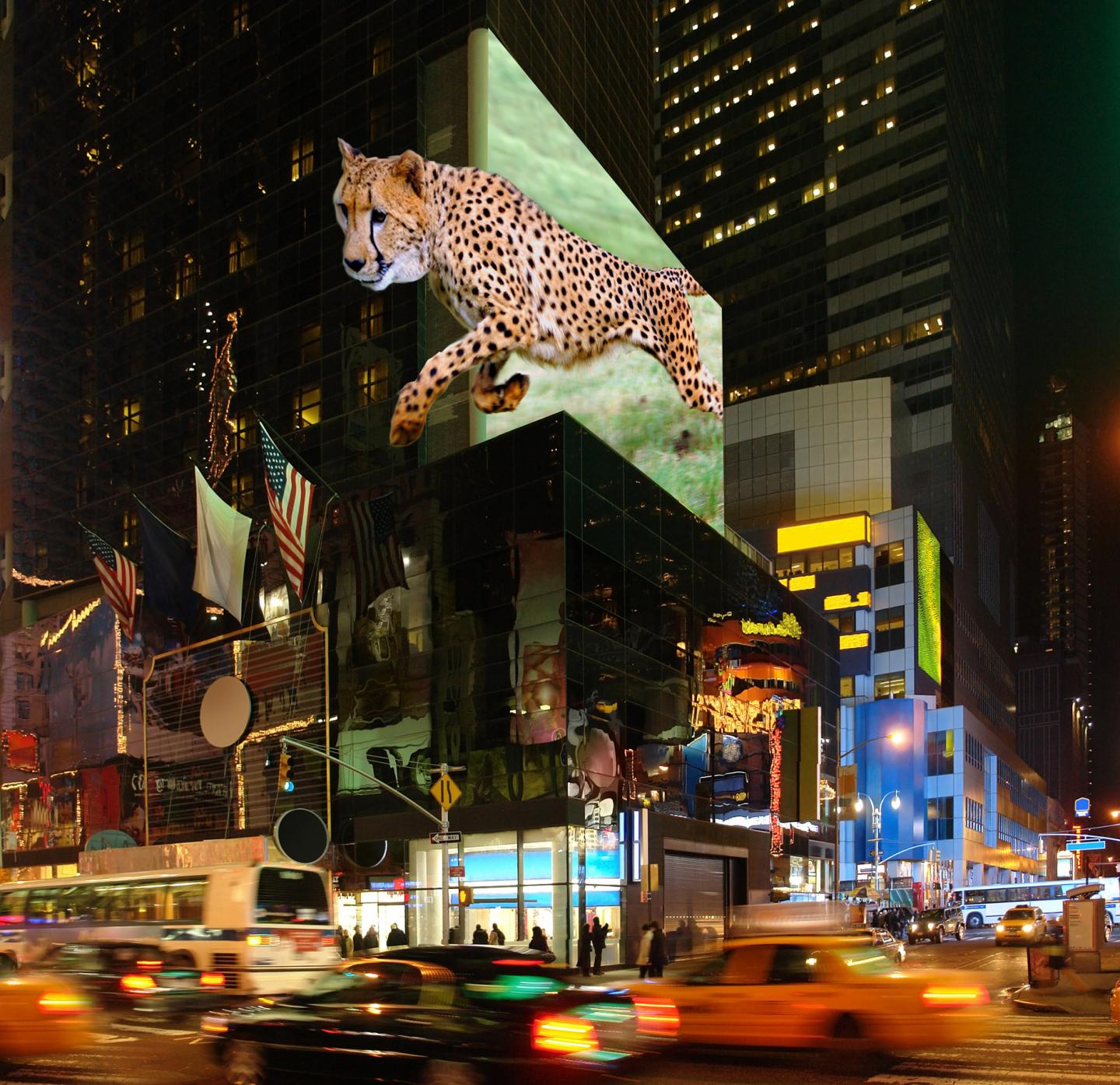Engineers in Austria have given us a blessing and a curse - they have created a giant laser system that sends beams in different directions, which makes them visible from many different angles.
The angular resolution is so fine that the left eye is presented a different picture than the right one, creating a 3D effect.
In 2013, the start-up company TriLite Technologies had the idea to develop this new kind of display, which sends beams of light directly to the viewers' eyes. They got some help from the Vienna University of Technology. The first prototype only has five pixels by three, but it works. 
Some day. Credit:
TriLite
"We are creating a second prototype, which will display color pictures with a higher resolution. But the crucial point is that the individual laser pixels work. Scaling it up to a display with many pixels is not a problem," says Jörg Reitterer of TriLite Technologies who is also a PhD student in the team of Professor Ulrich Schmid at the Vienna University of Technology.
Every 3-D Pixel - what they call a "Trixel" - consists of lasers and a movable mirror. "The mirror directs the laser beams across the field of vision, from left to right. During that movement the laser intensity is modulated so that different laser flashes are sent into different directions," says Ulrich Schmid.
To experience the 3-D effect, the viewer must be positioned in a certain distance range from the screen. If the distance is too large, both eyes receive the same image and only a normal 2D picture can be seen. The range in which the 3D effect can be experienced can be tuned according to the local requirements.
Same Billboard, Hundreds of Different Customized Images at Once
3-D movies in the cinema only show two different pictures - one for each eye. The newly developed display, however, can present hundreds of pictures. Walking by the display, one can get a view of the displayed object from different sides, just like passing a real object. For this, however, a new video format is required, which has already been developed by the researchers.
"Today's 3-D cinema movies can be converted into our 3-D format, but we expect that new footage will be created especially for our displays - perhaps with a much larger number of cameras," says Franz Fiedler, CTO of TriLite Technologies.
Compared to a movie screen, the display is very vivid, so it can be used outdoors, even in bright sunlight. That will mean advertisements. Electronic Billboards could display different ads, seen from different angles.
"Maybe someone wants to appeal specifically to the customers leaving the shop across the street, and a different ad is shown to the people waiting at the bus stop," says Ferdinand Saint-Julien, CEO of TriLite Technologies.
The technology has now been patented and presented in several scientific publications. The second prototype should be finished by the middle of the year, the commercial launch is scheduled for 2016.





Comments